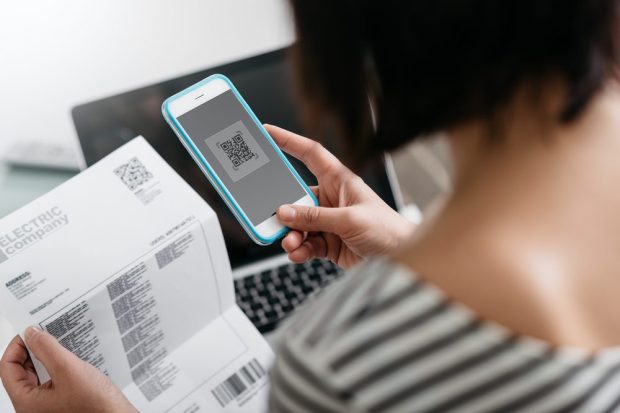Matera’s US Debut Seeks to Duplicate Brazil’s Instant Payment, QR Code Success

By any measure, instant payments and QR codes have been a phenomenal success in Brazil.
Patrick Devlin, president of Brazilian FinTech Matera, told PYMNTS’ Karen Webster that his company is setting the stage for the United States to see similar traction, especially when FedNow debuts next year.
Pix, the instant payment system implemented by the Central Bank of Brazil only two years ago, is now being used by 70% of Brazilians across billions of transactions. The digital payments options are proving to be huge substitute for cash and ACH transactions, and are being used in everyday purchases.
“When we heard about the launch of instant payments in U.S. — with the prior success with RTP and now the new launch of FedNow, we looked at our solution in Brazil, and saw this would be a great fit,” he said in an exclusive interview.
Matera, which provides instant payment, QR code payment and core banking solutions for financial institutions, said Friday (Dec. 9) that it is establishing an office in San Francisco in order to bring its QR code payment solution to these shores.
In doing so, he said, the U.S. will play a bit of catch up with the payments innovation that has been happening in other parts of the globe.
As he told Webster, “the U.S. has been about three years behind Brazil.”
Matera’s technology takes care of the integration and the ISO messaging needed to get the banks up and running in supporting instant payments and QR codes, which, Devlin said, is “two-to-three years ahead of anything the U.S. market has seen.” He added that FIs will be able to conduct real-time transactions through the Matera platform.
The company said Friday that its QR code payment software can be paired with instant payments or used closed-loop.
Devlin noted that there’s enough overlap to make the transition into the U.S. a seamless one. Many of the FIs that are Matera clients in Brazil, he said, also operate in the United States. Larger banks here in the U.S. are keenly interested in QR codes particularly at the point of sale, he noted.
To help banks, Devlin said, “we’re a software solution that — with FedNow, RTP and QR codes mechanisms all in one — can be integrated into the bank and can be thought of as almost being ‘hosted’ by the bank.”
With the functionality firmly in place, he said, we’ll see some natural progression of use cases. Devlin noted that when Pix started in Brazil, 95% of the volume was tied to P2P payments. Now, 35% of the volume is on the commercial side, in P2B transactions.
In the U.S., he said P2B QR payments may involve paying utility bills, to name just one example. Scanning codes and paying bills instantaneously bypasses paper and electronic checks, and helps ensure the bills are paid on time.
“Initially,” he said, “if a bank wanted to put their toe in the water, they could start this on closed loops, just do it with their own customers, get good at it and then open it up to the rails.”
Market Differences Matter
Of course, no two markets are exactly the same. He noted that in Pix’s success in Brazil has boiled down to a few critical factors. For one thing, the central bank mandates Pix instant payments for the large banks.
In turn, the central bank encouraged the markets to educate consumers and drive innovation, while offering some runway toward UI across mobile devices and QR code standards, which layered in that payments functionality.
“With all of this leadership,” he said, “it made it a lot easier for the Brazilian market to not only roll out instant payments but to do it consistently.” Merchant acceptance has also proved critical, and Devlin noted that a merchant network developed independently of the banks.
As to the key differences between the U.S. and Brazil, per Devlin’s assessment: With the central bank mandates in place, a significant number of consumers who did not have access to traditional financial services were brought into the system.
In the United States, however, most people already have an account or a relationship with a bank. Debit cards are firmly in place, and digital wallet use is not as strong as some observers might have expected.
So the question remains: Just what will drive consumers to use instant payments at the merchant point of sale?
Devlin contended that adoption will flow naturally from a better user experience. As it stands today, a consumer can walk into a store wielding a card, a digital wallet in their phone…or, for the most streamlined experience, use a QR code that links a transaction directly to a bank account, bypassing third parties altogether.
Standards are Critical
Getting all stakeholders — banks, merchants and processors — on board with better digital payments options will require standards. Devlin told Webster that there needs to be a universal standard for how consumers interact with instant payments in general (via FedNow or RTP) on their phones.
“I call this the user experience standard,” he told Webster, “and we’ll need that in the U.S.” Matera, he said, has been busy talking to banks here and presenting a standard for that user-facing setup.
The second standard that’s needed will be a QR code standard (as is being explored by the Faster Payments Council) that can help minimize infrastructure and maximize acceptance across merchant deployments.
“We’re saying that given what worked in Brazil,” he said of the QR standard tied to EMVco, “you can probably tweak that a little bit and that probably become the de facto standard in the U.S.”
But until we see such uniformity, predicted Devlin, and as noted above, banks can and will still use closed loop environments.
QR codes used at the point of sale will also prove popular, he said, as they can be programmed to provide incentives or promotions right down to the individual customer level. (In Brazil, merchants offer discounts to consumers paying with QR codes, as the businesses get to sidestep interchange fees).
Looking ahead, said Devlin, the timing is right as the U.S. gets ready for FedNow and the infrastructure runway is being built.
As he told Webster, as Matera establishes its U.S. beachhead, “the larger U.S. banks are now realizing that this is the tip of the iceberg — and as they figure out QR codes, and decide what they’re going to do with instant payments, we’ll be ready.”
